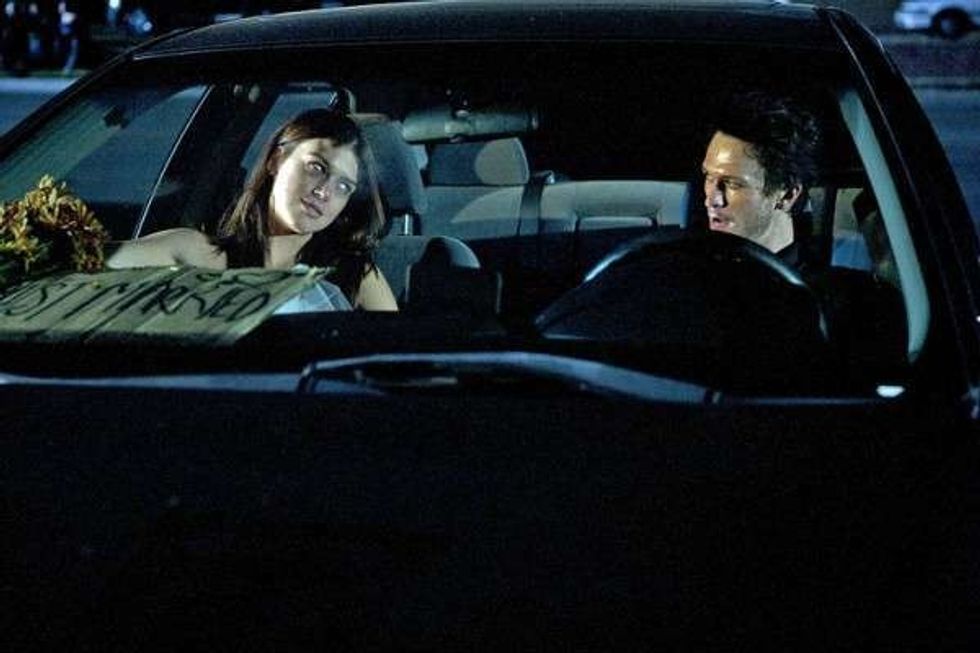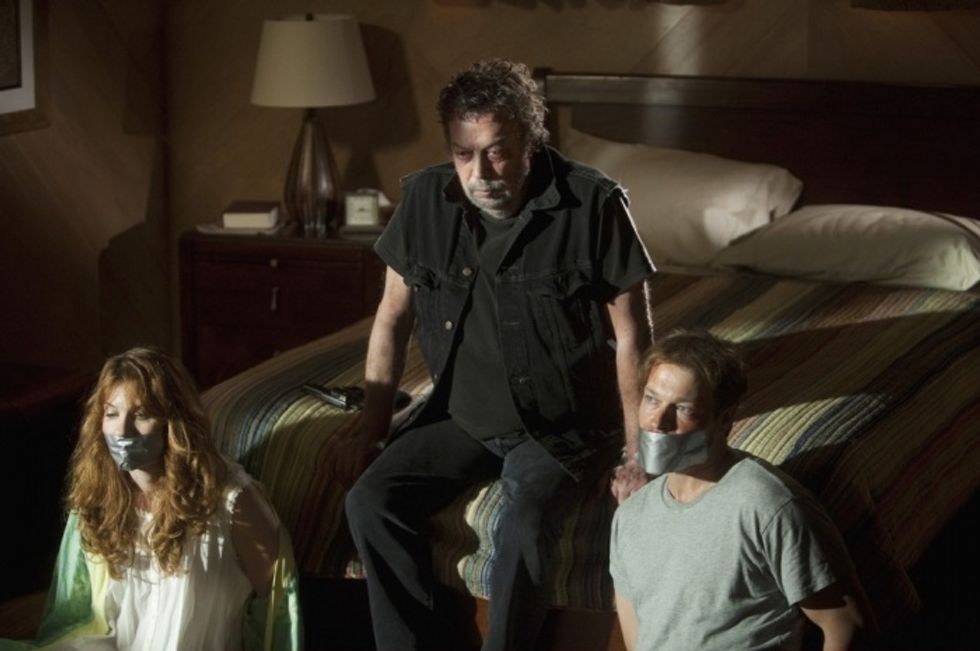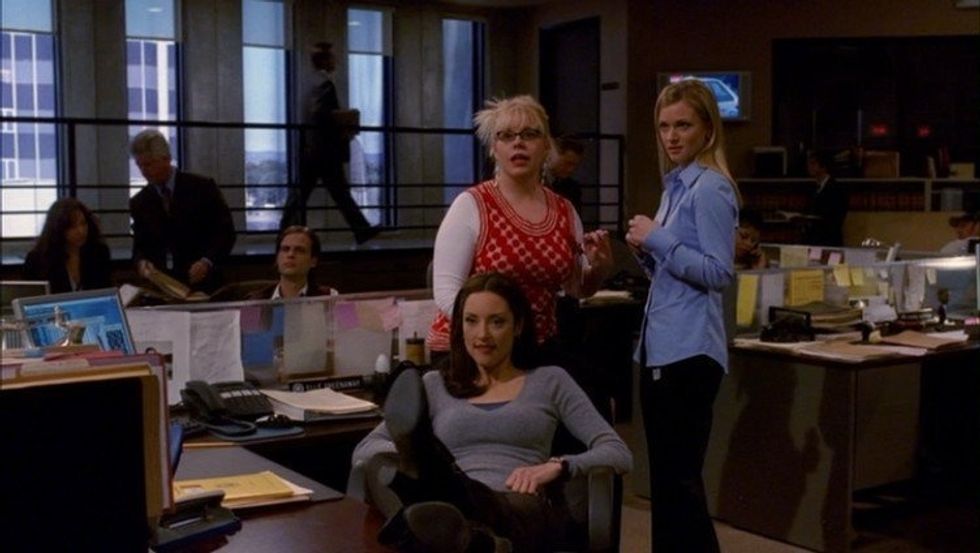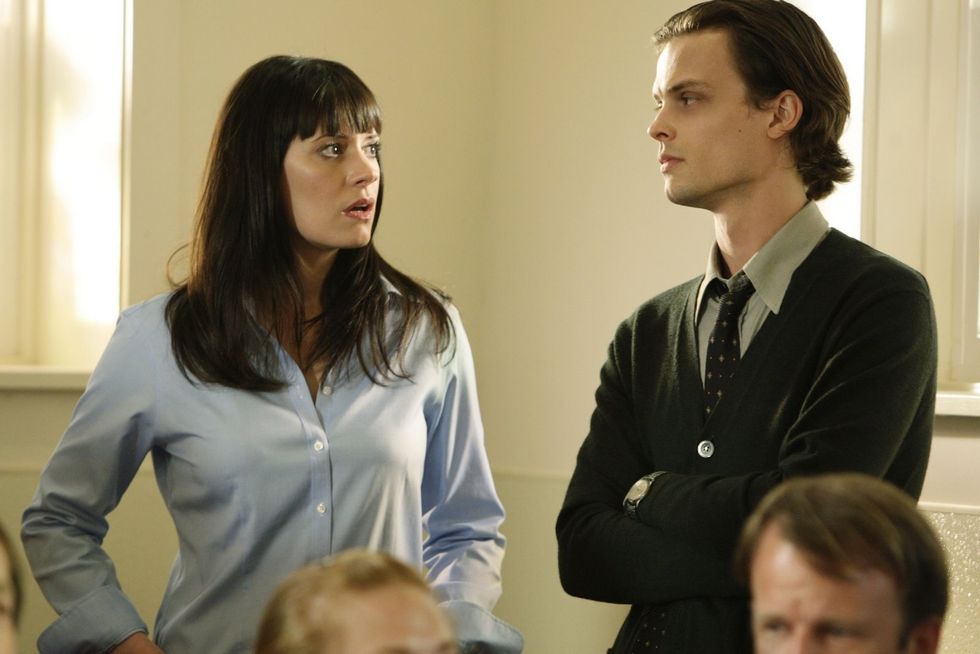Have you ever been reading up about a true crime case, only to discover that something about it seems familiar—and then suddenly you realize that it’s because you watched a variant of the case on Criminal Minds?
Or maybe you never knew that Criminal Minds, the iconic crime show that’s ending for good on February 19th, bases a lot of its cases on real-life events. That’s how the show wants it. “I don’t want anyone who was actually involved in it (the crime) to ever know,” said executive producer and writer Ed Bernero, explaining why he and his team typically obscure the details of the real crimes that inspire the shows. “So we start out with a kernel of what’s a real case, and then we try to make it so different that nobody who was actually involved in it ever would know.”
Despite their dedication to glossing over real events, the show’s actors, writers, and production team have to sift through a multitude of real materials to create an accurate depiction of the Behavioral Analysis Unit’s experiences. “I got bulletproof windows. Hell, yeah, I did,” said Paget Brewster, who plays Agent Emily Prentiss on the show. “I started reading those FBI books, and they are rough. We’re not at all showing what people are capable of, not on television. You couldn’t put it on television, the things that are done to victims and their bodies afterwards. It’s appalling and burns into your brain. I had a good couple of weeks where I didn’t sleep so well … And it does affect you. Knowing the inside look that we get, just having access to FBI material is disturbing.”
Sometimes, though, the writers use all this research to go further, making explicit plotlines and creating narratives that mirror real (and often very dark) events. Here are 10 episodes of Criminal Minds based on real crimes.
1. The Thirteenth Step

The 13th episode of season 6 finds the BAU venturing out west, hunting a murderous couple named Sydney Manning and Raymond Donovan. The couple was based on real-life lovebirds Charles Starkweather and Caril Anne Fugate, who killed 11 people in 1958 and inspired the infamous films Natural Born Killers and Badlands.
Charles Starkweather was 19 when he and his 14-year-old girlfriend went on the killing spree that made them famous, which began when Starkweather shot and killed Fugate’s mother, stepmother and two-year-old sister. Contrary to the romantic narratives in Natural Born Killers and Badlands, Fugate may not have been a loving accomplice; she later told the jury that Starkweather had told her he was holding her family hostage and forced her to help him with his crimes. But she was given a life sentence in prison because of the fact that she had many opportunities to escape and had failed to do so, and she also directly helped Starkwater kill some of his other victims.
2. Our Darkest Hour and the Longest Night

The finale of season 5 and the first episode of season 6 take place during a series of blackouts in Los Angeles, and the primary unsub (unspecified subject in a law enforcement investigation) in the episode—known as “The Prince of Darkness”—has been raping and killing victims during blackouts for 26 years. His activities are based on the career of Richard Ramirez, also known as the “Night Stalker,” who raped and killed thirteen victims and tortured a dozen more in the 1980s. The fictional Criminal Minds villain and the real-life Ramirez both tortured and killed adults but did not hurt children, and they both hunted only at night in Los Angeles.
3. To Hell… And Back
Another two-part episode, “To Hell” and “And Back” are two of the more disturbing Criminal Minds episodes of all time, which is saying a lot. The episodes follow the BAU as they investigate a case wherein a serial killer who targets the homeless, prostitutes, and junkies feeds their bodies to pigs on his farm. In the Criminal Minds episode, the killer is actually two people—a mentally disabled killer and his quadriplegic brother who is experimenting on victims’ bodies in order to try to find a cure. This fictional case is based on a killer named Robert Pickton, a real-life pig farmer who preyed on vulnerable members of society in the nineties and in some cases, actually fed their bodies to his pigs. Pickton often hosted huge, thousand-person raves in a converted slaughterhouse on his farm, and people who attended these parties would sometimes go missing, though one of his victims had to escape in order for authorities to connect the cases to Pickton. Horrifyingly, Pickton may have mixed human flesh with pork and sold it to local markets. He may have killed somewhere from 26 to 49 women.
4. The Tribe

The sixteenth episode of season 1 finds the BAU seeking out a pack of killers as they try to frame a group of Native American tribes for murder. Eventually, the BAU figures out that the actual tribe is a group of white killers who are attempting to create racial hatred against Native Americans. This is based on the actions of none other than Charles Manson, whose murderous “Family” was inspired by his desire to begin a race war between whites and blacks (which Manson referred to as “Helter Skelter”).
5. Minimal Loss

In episode 3 of season 4, the team goes undercover to examine allegations of child abuse at a cult compound. They discover a cult leader named Benjamin Cyrus, who has named himself the Messiah and married a teenage girl. When police raid the compound, Cyrus blows up a rig of dynamite, killing law enforcement officials and cult members alike.
This case (and its brutal end) is based on the real-life story of David Koresh, the leader of the Branch Davidians, a cult based out of Waco, Texas. The Davidians had already been kicked out of Shepherd’s Rod, a sect that in turn had been kicked out of the Seventh-Day Adventist Church. During his time as leader, Koresh abused children and kept his cult members trapped. At one point, an FBI raid of the compound ended in a massive fire (though it’s unclear as to what actually started the fire), and Koresh was found inside, having been shot by his second-in-command.
6. Alpha Male
Many of the killers on Criminal Minds are motivated by deep insecurities about their masculinity, and this episode’s perpetrator is no different. The episode follows a murderous, misogynistic man who takes out his anger at not being in a relationship by spraying women with battery acid. It was based on a real-life killer named Eliot Roger, who murdered six people in a spree in Isla Vista, California as part of a “day of retribution” meant to punish women who had previously rejected his advances.
7. Ashes & Dust
Season 2’s nineteenth episode follows an arsonist as he sets a series of deadly fires. The unsub turns out to be Vincent Stiles, who has been killing the families of wealthy corporate developers building on the same contaminated land. In the show, his actions are linked to Earth Defense Front, which is likely based on the Earth Liberation Front, an environmental organization active in the 1970s that set fire to places like ski lodges to draw attention to the urgency of global action on environmental issues. However, in the episode, the killer winds up murdering several people, whereas in real life the Earth Liberation Front’s efforts never had any human casualties.
Stiles was inspired by real-life killer Paul Kenneth Keller, an arsonist whose crimes were also likely spurred on by his divorce. Keller was convicted of setting over 107 fires in the 1970s, which resulted in the deaths of three people, though he was not connected to the Earth Liberation Front or the environmental movement in any form.
8. Natural Born Killer
Season 1’s eighth episode follows a mob hitman who turns out to be a serial killer. The unsub, Vincent Perotta, is an extremely sadistic psychopath who kills over 100 people in horrifying manners and at one point feeds a body to flesh-eating rats. In the episode, he holds an undercover cop hostage, sending the BAU on the trail.
Perotta is based on the serial killer Richard Kuklinski, a mafia hitman active in the 1980s who ultimately took credit for hundreds of murders, though he may have embellished the details of many of them. (Like his fictional counterpart, Kuklinski claimed he fed bodies to flesh-eating rats, though there’s doubt as to whether these sorts of rats actually exist). Kuklinski was nicknamed “The Iceman” by law enforcement, was known as “the devil himself” among his fellow hitmen, and was notorious for the graphically violent nature of his murders, which holds true for the Criminal Minds killer.
9. 25 to Life
The eleventh episode in season 6 tells the story of Dr. Don Sanderman, who is 25 years into serving a life sentence for a crime he insists that he didn’t commit. Sanderson is set to be released, but he’s then arrested for murder. The BAU’s investigation reveals that Sanderman was being framed by a trio who actually killed his family, one of whom has killed the other two members of the trio in order to keep them quiet.
The actual story that inspired this tale is a little bit different—the opposite, you might say. In 1970, an army surgeon named Jeffrey MacDonald was convicted of killing his two daughters and pregnant wife. However, he told the police that his family was killed by a group of hippies chanting “Acid is groovy, kill the pigs.” The hippies were most likely taking acid and chanting about peace and love, though, for forensic evidence on the scene proved that MacDonald had indeed murdered his family and staged an invasion.
10. The Big Wheel
The 22nd episode of the 4th season tells the story of a suspect named Vincent Rowlings, who scrawls “help me” in red lipstick on the walls of his victims’ homes.
Rowlings is based off of the “Lipstick Killer,” a man named William Heirens. In 1946, the then-18-year-old killer was linked to three murders, and at one murder scene, he wrote, “For heaven’s sake catch me before I kill again I cannot control myself” in lipstick on the walls. Heirens died at age 83 in a Chicago prison, and after 65 years behind bars, he was reportedly Chicago’s longest-serving prisoner (and he maintained his innocence for all that time).
- 5 Romantic Movie Gestures That Are Actually Super Creepy – Popdust ›
- Groundhog Day and the Strange Phenomenon of Time Loop Movies … ›
- Netflix’s “Ted Bundy Tapes” Divides Viewers Between Terrified and … ›
- Neil deGrasse Tyson’s Tone Deaf Tweet Is Exactly What’s Wrong … ›
- The Strange Ballad of John McAfee – Popdust ›
- Does Britney Spears Need a Conservatorship? – Popdust ›
- Conpsiracy Theory Thursday—Did OJ Take The Rap For His Son … ›
- Leah Remini, the Church of Scientology, and Danny Masterson … ›
- What Ellen Forgets By Forgiving George W. Bush – Popdust ›
- Netflix’s “Killer Inside: The Mind of Aaron Hernandez”: Why Did an … ›














